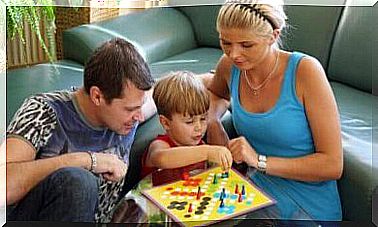How To Recognize Bullies

Students who exhibit aggressive and violent behavior toward others tend to have a specific physical and psychological profile. Below we describe the most common characteristics of bullies in school.
It is important that teachers and educators are aware of these characteristics. Teachers have a responsibility to identify potential bullies by observing and recording students’ behavior. In this way, they can anticipate, prevent and reduce cases of bullying in their classrooms and schools.
The most common characteristics of bullies in school
But what kind of students are bullying? In general, bullies have the following characteristics in common:
- The bully is physically stronger than his peers.
- Is dominant and impulsive.
- Refuses to follow rules and codes of conduct.
- Has low tolerance for frustration.
- Tends to challenge authorities.
- Has a seemingly good self-esteem.
- Shows a positive attitude towards violence.
- Shows a lack of empathy for their victims.
- Seems to lack guilt.
- Has problematic social relationships and family relationships.
The different types of bullies
Although these are the most common characteristics of bullies, we must take into account that there is more than one type of bullying. According to Alexander Schwarz, there are three different types of bullies, which are the following:
- Aggressive. This is the most common type of bullying. They act out of a desire to gain power and dominance over others. These students reinforce their personalities by bullying one of their classmates.
- Passive. These students are insecure. They are not the ones initiating the threat. Rather, they wait for an opportunity when aggression begins, and then they become eager participants. In fact, they tend to show loyalty to an aggressive bully.
- Victims of bullying. These aggressors have, at some point in the past or in the past, been victims of bullying. These students are not so popular and they scare or have scared others who are weaker than them. At the same time, they are or have been bullied by classmates who are stronger than them.

The consequences of taking on the role of aggressor
Taking on the role of the aggressor has serious negative effects on the bullies, both in the short and long term. As a result of their violent behavior, bullies tend to:
- Participate in toxic and negative social situations.
- Perform poorly in school or fail completely.
- Show cruelty and emotional instability.
- Use aggression as a way to resolve their conflicts and problems.
- Have a lack of self-insight and lack the ability to critically examine themselves.
- Show respect for aggressive behavior.
- Internalize criminal and antisocial behaviors.
- Show a lack of compassion for the suffering of others.
- Lack of empathy for others.
As these children approach adulthood, they often fall into socially maladaptive patterns of behavior. These may include vandalism, alcohol abuse and abuse of other substances. At the same time, they are likely to be aggressive towards others in the future (their partner, their children, etc.), or become aggressive or violent criminals. Although it can be difficult to see at the moment, the bully himself is a victim and it is up to us adults to help him or her to break the pattern.
Therefore, it is important to detect and prevent bullying. To do this, schools must introduce activities that promote and develop students’ abilities, such as empathy, compassion and respect for diversity and the needs, qualities and interests of others.
The purpose of these activities is to make the bullies and those who act as witnesses aware of the bullying problem. In addition, schools should strive to reject and condemn these aggressive acts.








